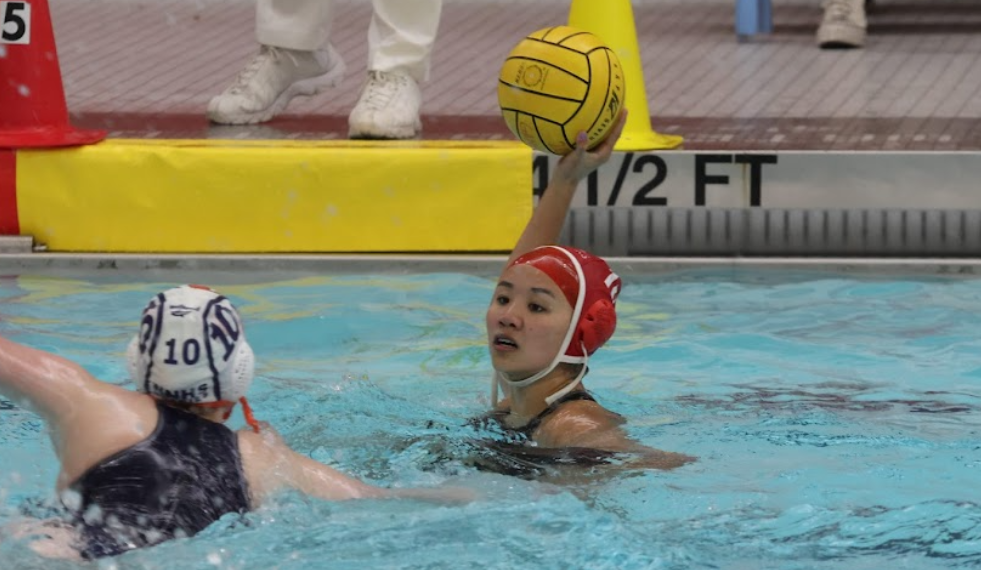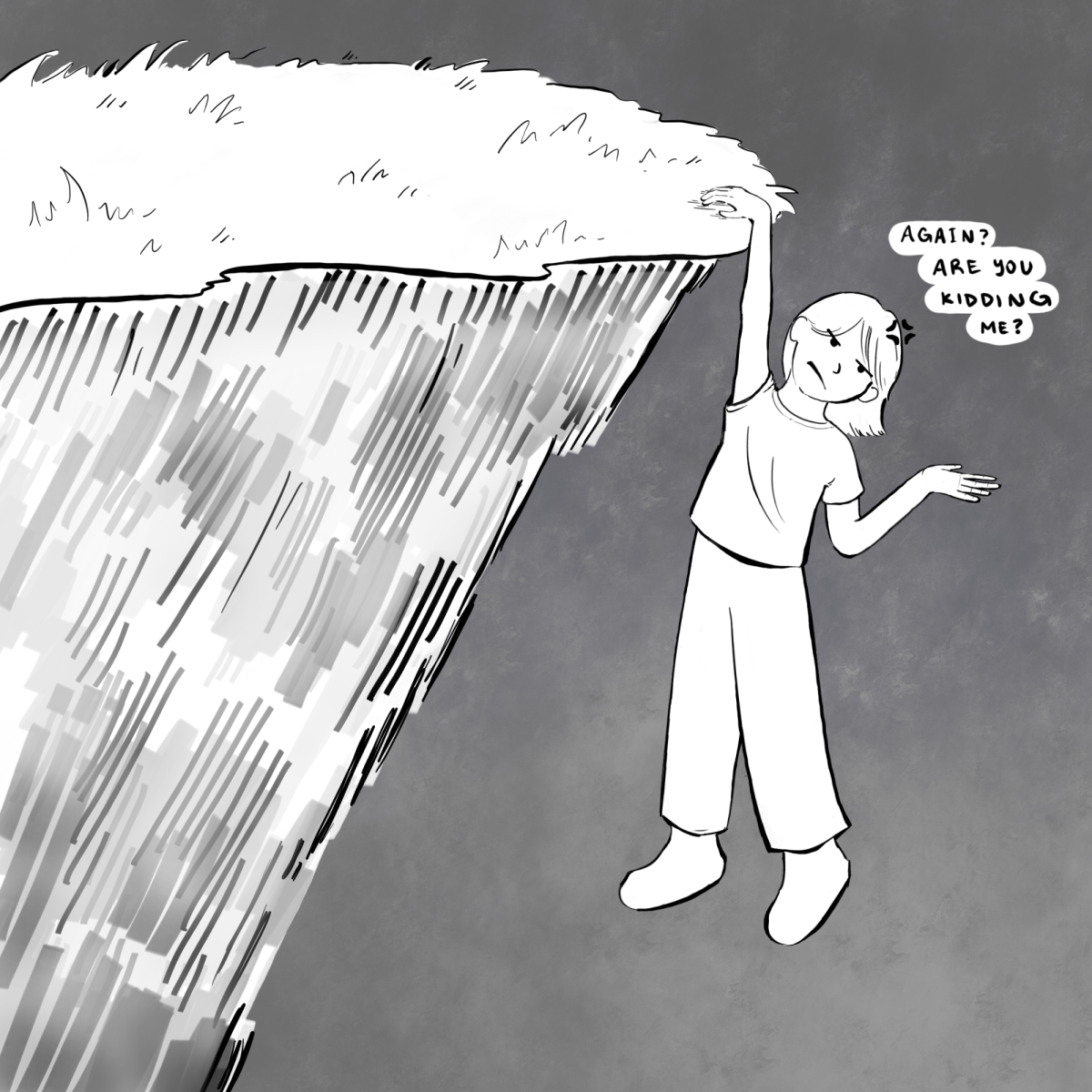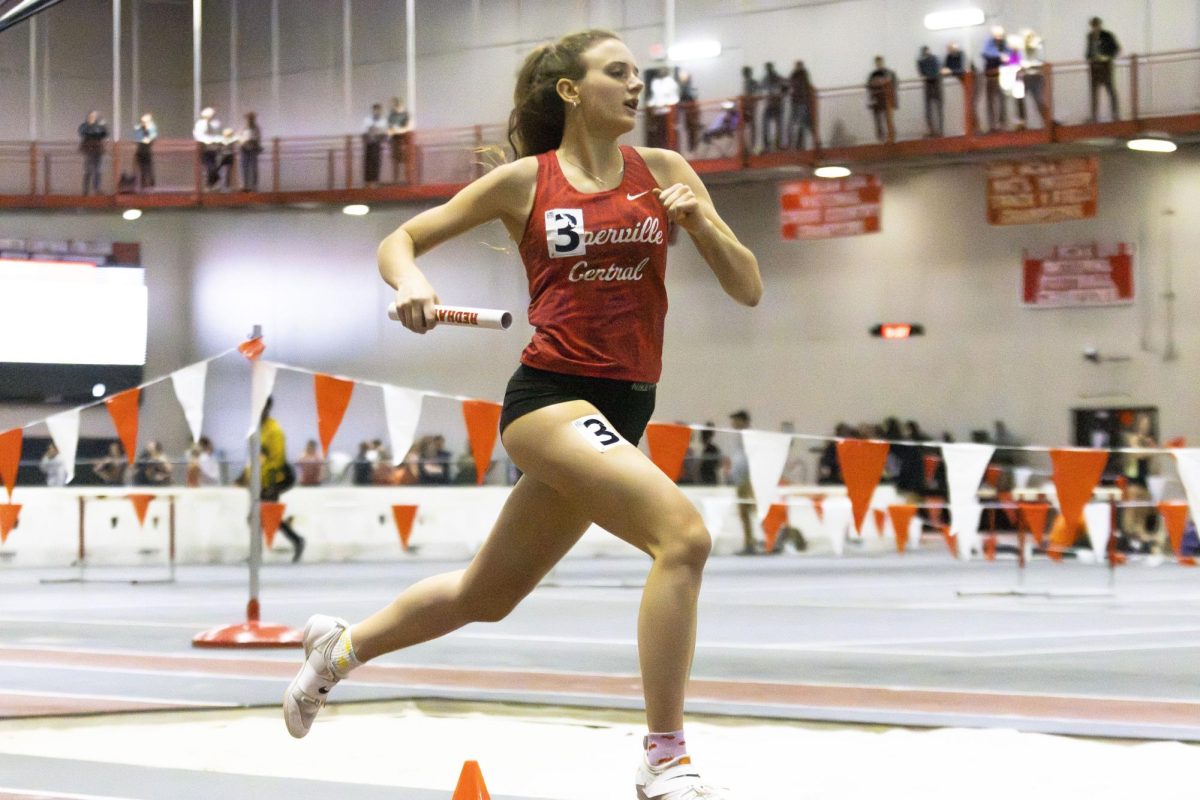Out for the season
March 4, 2018
Senior Adriana Garcia considers herself clumsy. Bones she’s broken since childhood only reinforces that in her mind, which is why she begins to laugh when she remembers her decision to stand on a rolling chair to reach something in her closet.
“I decided, ‘Hey, nothing wrong could happen here,’” Garcia said. “So I just got on top of it, and I fell and my shoul-
der got stuck on the chair, and my arm went down […] So I just kind of fell, and my arm just stayed up.”
Garcia thought she had dislocated her shoulder. But after a visit to the doctor’s office the next day, she realized that the damage was more extensive. Ultimately, Garcia had torn her rotator cuff, a group of muscles and tendons that surround the shoulder joint, effectively ending her tennis career, at least in high school.
When a muscle or a ligament tears, treatment depends upon the extent of the damage done. When an athlete is injured at school, athletic trainer Mark Florence begins by evaluating the injury.
“We sit down with them and try to diagnose the issue,” Florence said. “I’m a firm believer of finding out what they can do versus what they can’t do. It allows us to put them in a position to do as much as they can within certain limitations.”
For Garcia, treatment involved surgery and physical therapy because she couldn’t lift her arm over her head afterwards.
“I couldn’t really serve, I couldn’t hit overheads,” she said. “And it was just kind of awkward to move the arm still be cause I was, at that point, still doing physical therapy for it.”
Junior and swimmer Emily Wagner can empathize, having spent about a month in a wheelchair following an accident where she both broke her wrist and tore her Anterior Cruciate Ligament, (ACL) after falling while playing touch football.
“When I first fell, I didn’t feel my wrist at all, so my wrist didn’t hurt, and I was focusing on my knee,” Wagner said. “So my knee popped, so I heard that, and that scared me a little bit.”
The pop that she heard was her ACL tearing. Wagner didn’t think that she was hurt badly at first. But as she gazed down at her wrist, she noticed a large bump protruding from it and could feel the pain in her knee, unbearable enough to the point that she thought she couldn’t walk.
According to the U.S. Center for Sports Medication, the ACL is responsible for preventing the knee from wobbling when walking. And when the ACL tears, the pain is excruciating.
“I thought I’d just popped out my knee, kind of just like a regular injury, and I’d kind of just pop right up and start to play again,” she said. “But I was on the ground for 20 minutes, and I saw my hand and it started hurting, and after the 20 minutes my knee started hurting too.”
Wagner was rushed to the emergency room, where it was confirmed that she had broken her wrist and torn her
ACL.
This all happened over Thanksgiving break, after swimming season, but before water polo season. However, even after having her wrist encased in a cast for four weeks, attending session after session of physical therapy and getting wheeled around the school, Wagner can still feel the effects of her injuries.
“I have to know what I can and can’t do,” Wagner said. “There are certain things that my muscles just aren’t really used to, so I have to realize my limitations in certain areas and try to be a little more cautious.”
Wagner is delaying surgery on her knee until after Central’s water polo season because the recovery time would take anywhere from five months to a year. She missed her entire club water polo season due to limitations resulting from her injuries.
“Swimming wasn’t that bad, because there’s not really any impact,” Wagner said. “It feels unstable, but it’s not really that big of a deal. But pushing off of walls was a little hard, and […] water polo’s pretty difficult, just because treading, but I have to build up the muscles around [my knee] because I just don’t have the support.”
Orthopedic surgeon Dr. Rick Lehman writes that it is highly recommended that athletes get surgery on a torn ACL because the knee could remain unstable without surgery. This could lead to problems later on in life, such as premature arthritis. However, before surgery, it’s important to strengthen muscles through physical therapy, which is what Wagner is doing.
“Get the right type of diagnosis,” Florence said. “You have to do your rehab. There’s no day off. You have to do your exercises. It’s a number one priority whether you’re with somebody or at home.”
Currently, Wagner continues to heal.
“My wrist is fine,” she said. “The bones are good. It’s healed completely. I’m still working on a little range of motion, but it’s 100 percent fine.”
Her ACL has not completely healed, and she isn’t sure when it will. But Wagner isn’t worried.
“It’s a big deal for me because I’ve never been seriously injured this badly, and for a while, but I know that things like this, they’re just going to happen,” she said.
But what if an athlete suffers an injury or ailment with an indefinite timeline? Unfortunately, for Garcia, that has become a reality after being diagnosed with acute kidney failure.
“I’ve had accident-prone injuries and the kind that come out of nowhere,” Garcia said. “With my first one, on the left, I did end up telling my mom about it too late about the symptoms. I thought it was just a stomachache or something. But it’s kind of in the lower back.”
Garcia has had her left kidney removed. Her right kidney has suffered some damage and requires dialysis. The cause of her kidney failure is still unknown, and Garcia is currently on the donor list for a kidney transplant.
“Having only one kidney that kind of half works, that can prevent a lot of milestones in life,” she said.
Despite the limitations that have been placed upon her, both by her rotator cuff injury and kidney failure, Garcia is recovering.
“Now, I’d say [my rotator cuff] is pretty much completely healed,” she said. “There are some moments, like right after I wake up when my right shoulder feels a little [stiffer] than my left. It’s just a part of the way it healed. I do still do a ton of exercise, just because you get a little higher on the transplant list if you’re healthier.”
Garcia exercises both inside and outside, running with her dog or working out at the gym. She has not started playing tennis again. Although Garcia’s health situation is still uncertain, she doesn’t want to be considered weak or consider herself weak.
“I’m not sure I’d be the same person if I hadn’t experienced these things,” Garcia said. “I’ve beaten some really weird odds. I’m super grateful for that. I think the fact that I have to go to school or I have a test on this day, that motivates me to want to get better.”







